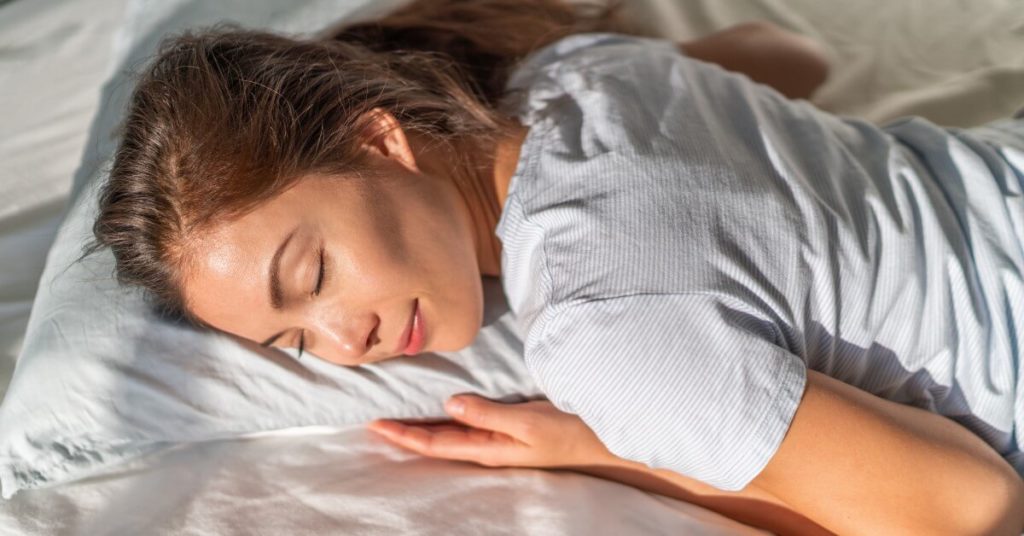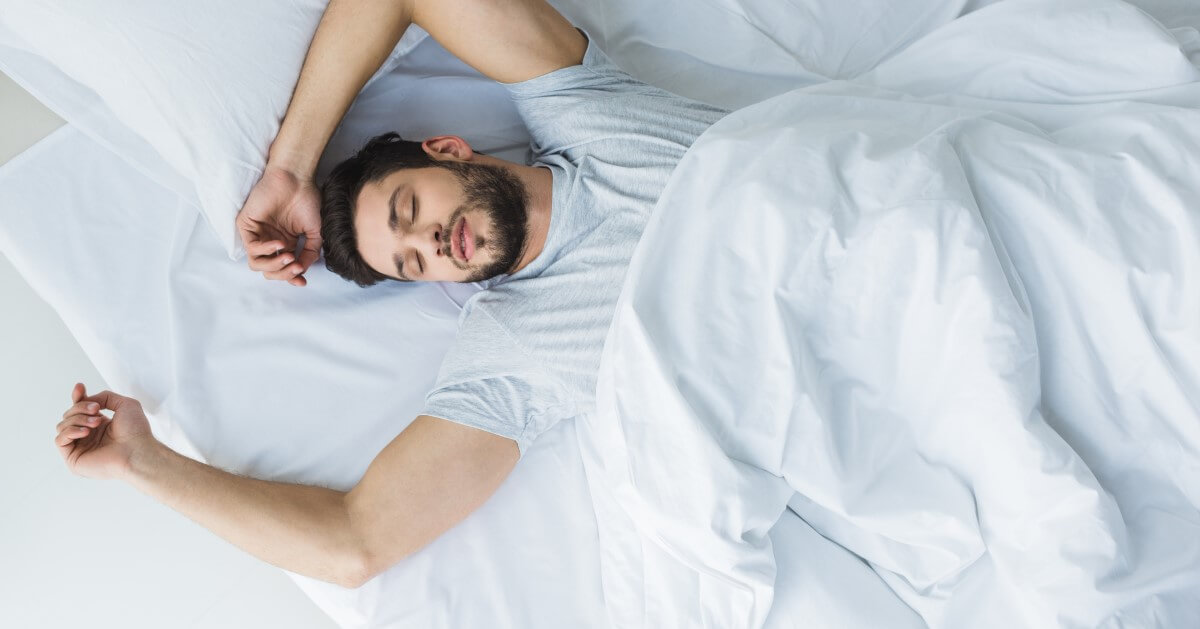
Medically reviewed by
Dacelin St Martin, MD
Triple board-certified in Sleep Medicine,
Internal Medicine, and Pediatrics.
A Look at Sleeping Positions | Tips for Changing Sleep Positions | Conclusion
Overview
You may go to bed for a good night’s rest without giving any thought to your sleeping position. Granted, most of us get into whatever position our body finds most comfortable.
Still, have you ever wondered if such a thing as an ‘ideal’ sleep position would mean better breathing and less soreness or aches upon waking? Yes, there is.
It’s a more flexible rule than one might think and a very individual process.

A Look at Sleeping Positions
Side Sleeping: The predominant sleep position for adults[1] and for a good reason. This position is recommended to relieve back pain and improve gut and brain health.
Side sleeping is especially recommended during pregnancy as it makes it easier for the heart to pump blood through the body and prevents the baby from putting extra pressure on the vein that carries blood back from the mother’s lower extremities to the heart.
People with sleep apnea are also advised to sleep on their side. Studies have shown that side sleeping can reduce apnea events by half and is recommended as a viable treatment option for non-obese sleep apnea patients.[2]
And if you are wondering if there is a better side to sleep on – there seems to be a connection between certain sleep sides and specific health conditions.
The left side may provide more benefits for pregnant individuals and those experiencing gastroesophageal reflux disease (GERD); however, sleeping on the right side has been shown to create optimal conditions for heart health.
Right-side sleeping creates more space in the chest cavity, putting less pressure on the heart and reducing its nighttime workload – a critical point for people who have had cardiac events.[3]
Back Sleeping: Although some benefits can be garnered from sleeping on the back, such as relief of joint pain or developing less facial wrinkling as we age, this position is not recommended for those with sleep apnea or non-apnea snoring. It’s also not recommended during pregnancy as it has been linked to fetal cerebral redistribution. In this condition, there is a preferential flow of blood toward the baby’s brain at the expense of other vital organs.[4]
Front/Stomach Sleeping: This position may be beneficial for those with sleep apnea as the natural head positioning here lends itself to the tongue pulling forward. In people with sleep apnea, the laxity of the tongue can cause it to collapse inwards into the throat and interfere with breathing while asleep.
The drawbacks of this position include an increased strain on the back and neck which can lead to soreness upon waking and is not recommended during pregnancy even in the earliest stages.
Tips for Changing Sleep Positions
The good news is that it can be changed if your favored sleep position aligns differently with your health condition.
You can experiment with different sleep positions and bedding to achieve this goal. Generally speaking, your pillow should provide sufficient support for your shoulders but have enough give to relax your neck.
If you’re a stomach sleeper, consider using a flat or no pillow to protect your neck.
For side sleeping, consider placing a pillow between your legs to prevent your knee joints from rubbing together as you sleep.
Back sleepers should consider a medium-firm mattress and a pillow under the knees to help maintain back curvature and avoid back aches.
Another factor that should be taken into consideration is sleep hygiene. Practicing good sleep hygiene and finding your perfect sleep position can provide the ultimate foundation for healthful sleep.
Conclusion
The best sleeping position should be readily determined by how you feel. And it may be something other than whatever your preferred position.
For example, you may feel wonderfully comfortable splayed out in bed on your back but may notice that breathing isn’t easy after a while, waking you up due to feelings of discomfort.
You may also fall asleep easily on your side but then wake up with a sore shoulder or arm on which you rested your weight all night.
As a rule, it may be time to alter your sleeping position if you feel tired and sore upon waking. This drug-free solution could significantly improve your sleep quality with time and patience.
References:
- Skarpsno, E. S., Mork, P. J., Nilsen, T. I. L., & Holtermann, A. (2017). Sleep positions and nocturnal body movements based on free-living accelerometer recordings: association with demographics, lifestyle, and insomnia symptoms. Nature and science of sleep, 9, 267–275. https://doi.org/10.2147/NSS.S145777
- Cartwright R. D. (1984). Effect of sleep position on sleep apnea severity. Sleep, 7(2), 110–114. https://doi.org/10.1093/sleep/7.2.110
- Martin-Du Pan, R. C., Benoit, R., & Girardier, L. (2004). The role of body position and gravity in the symptoms and treatment of various medical diseases. Swiss medical weekly, 134(37-38), 543–551.
- Robertson, N., Okano, S., & Kumar, S. (2020). Sleep in the Supine Position during Pregnancy Is Associated with Fetal Cerebral Redistribution. Journal of clinical medicine, 9(6), 1773. https://doi.org/10.3390/jcm9061773

